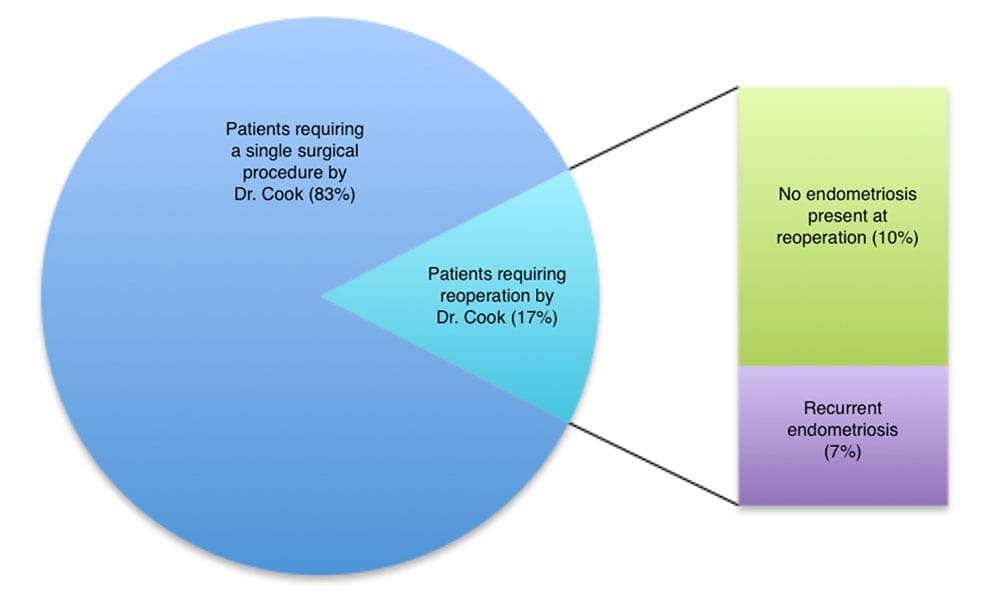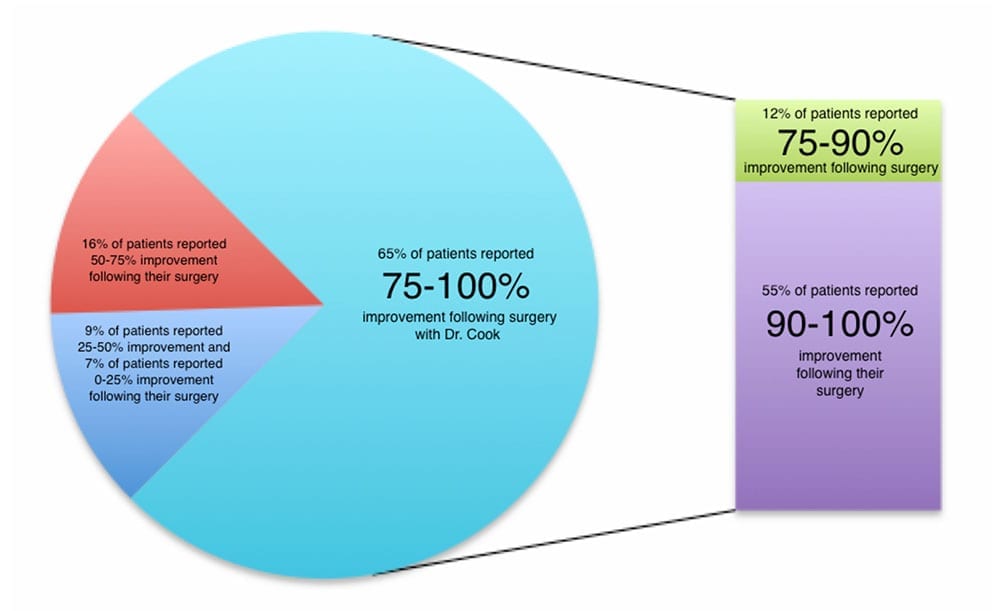Following specialist excision surgery with Dr. Cook, the vast majority of patients achieve lasting relief of their pain without recurrence.
Naturally, some of the first questions you are going to ask when looking for surgery for endometriosis are “what are the chances of this surgery actually helping me?”, “How long can I expect to have relief of my pain?”, and “Will this surgery cure me of my endometriosis?” While these are obviously very important questions to be asking, it can be hard to get a straight answer. Your surgeon may be unable to provide you with an overview of his or her follow-up data or whatever he or she can provide may be difficult to interpret.
At Vital Health Endometriosis Center, we want to know how our patients progress so that we can be confident that our treatments are effective. For this reason, we regularly follow-up with all surgery patients to keep track of their progress, prognosis, and outcomes. By doing so, we are not only generating important data for research but also are able to provide you with an honest and accurate reflection of what you can realistically expect after undergoing endometriosis excision surgery with us. Our follow-up data enables you to make an informed decision about your treatment options.


